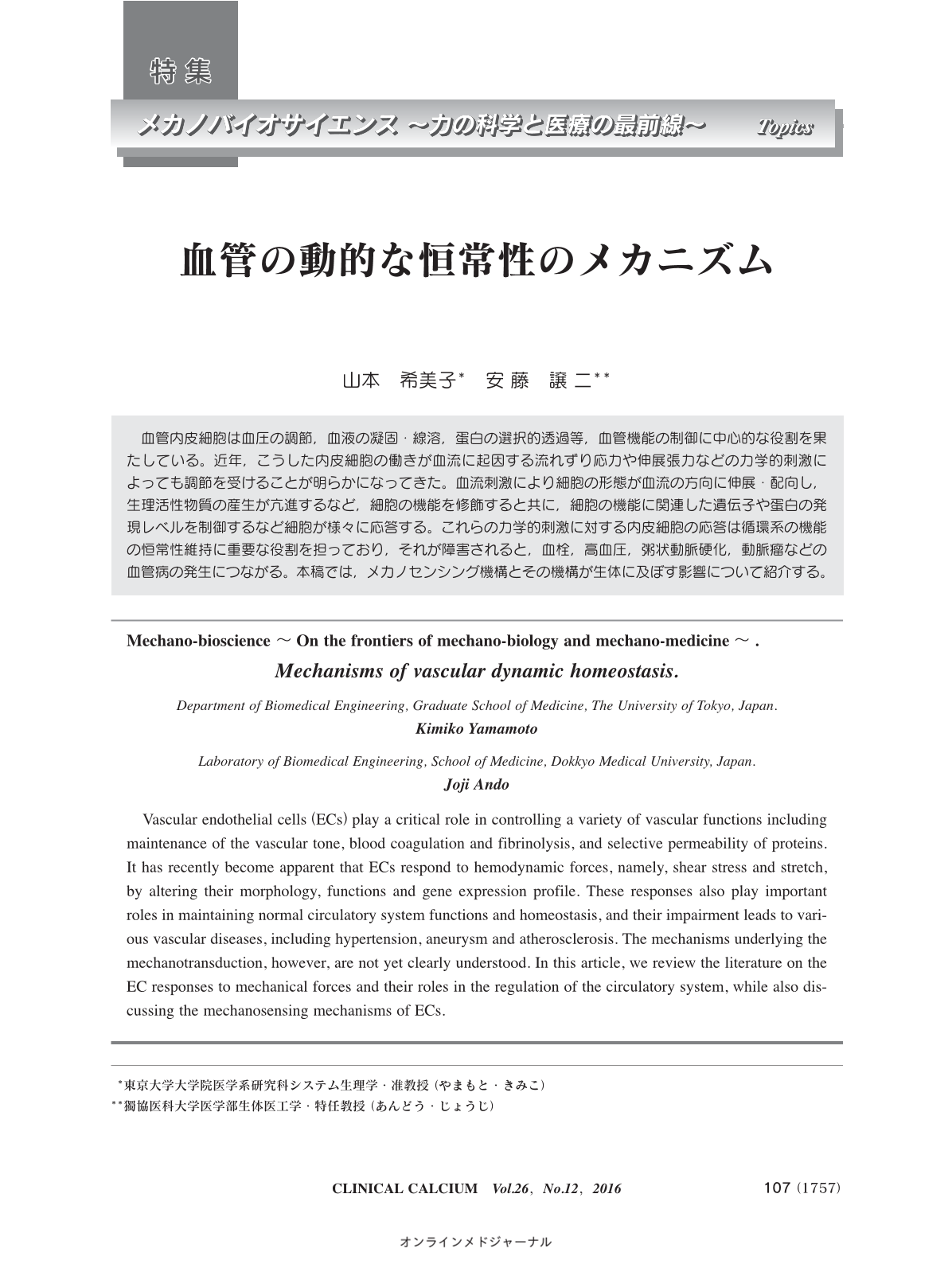Japanese
English
- 有料閲覧
- Abstract 文献概要
- 1ページ目 Look Inside
- 参考文献 Reference
血管内皮細胞は血圧の調節,血液の凝固・線溶,蛋白の選択的透過等,血管機能の制御に中心的な役割を果たしている。近年,こうした内皮細胞の働きが血流に起因する流れずり応力や伸展張力などの力学的刺激によっても調節を受けることが明らかになってきた。血流刺激により細胞の形態が血流の方向に伸展・配向し,生理活性物質の産生が亢進するなど,細胞の機能を修飾すると共に,細胞の機能に関連した遺伝子や蛋白の発現レベルを制御するなど細胞が様々に応答する。これらの力学的刺激に対する内皮細胞の応答は循環系の機能の恒常性維持に重要な役割を担っており,それが障害されると,血栓,高血圧,粥状動脈硬化,動脈瘤などの血管病の発生につながる。本稿では,メカノセンシング機構とその機構が生体に及ぼす影響について紹介する。
Vascular endothelial cells(ECs)play a critical role in controlling a variety of vascular functions including maintenance of the vascular tone, blood coagulation and fibrinolysis, and selective permeability of proteins. It has recently become apparent that ECs respond to hemodynamic forces, namely, shear stress and stretch, by altering their morphology, functions and gene expression profile. These responses also play important roles in maintaining normal circulatory system functions and homeostasis, and their impairment leads to various vascular diseases, including hypertension, aneurysm and atherosclerosis. The mechanisms underlying the mechanotransduction, however, are not yet clearly understood. In this article, we review the literature on the EC responses to mechanical forces and their roles in the regulation of the circulatory system, while also discussing the mechanosensing mechanisms of ECs.



